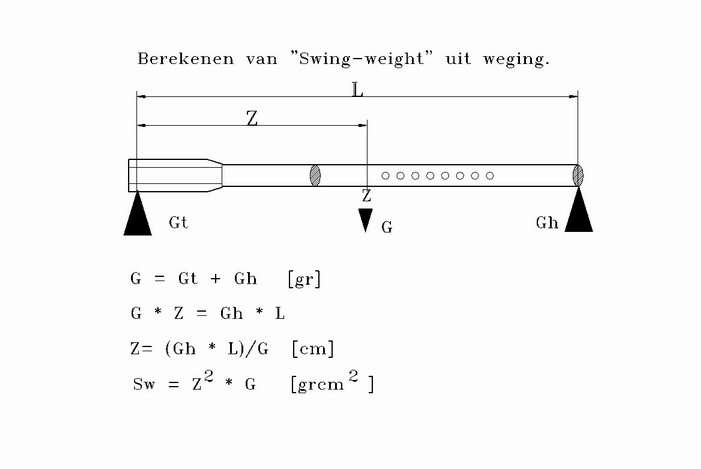I tried another experiment by measuring a racket with no weight and a 31 gram weight added at three different points on the racket. I put painter's tape on a racket at three different locations so I could add weight at almost the same locations for each test and to protect my racket. I also put another small strip of tape on my weight and the racket so I could make sure the weight was oriented the same every time. Here is a picture of the racket and weight with the tape:
First I went to my local big box store and asked to use their RDC and measured the swing weight with no weight added and with the weight added at the three locations where the tape was located. Then I did the same tests all over again. Then I came home and did all the same type of tests, and a lot of calculations to come up with the data I needed to use the TW calculator. Here are my results:
No weight added:
RDC SW - 325 - 326 / Average 325.5
Weight - 346 g - 346 g / Average 346 g
COM distance - 29.2 cm - 29.2 cm / Average 29.2 cm
Pivot distance - 62.1 cm - 62.1 cm / Average 62.1 cm
TW SW - 296 - 286 / Average 291
Difference between RDC and TW =
-34.5
Weight added in lower position
RDC SW - 330 - 331 / Average 330.5
Weight - 376 g - 376 g / Average 376 g
COM distance - 31.0 cm - 31.0 cm / Average 31.0 cm
Pivot distance - 62.1 cm - 62.1 cm / Average 62.1 cm
TW SW - 359 - 341 / Average 350
Difference between RDC and TW =
+20
Weight added in middle position
RDC SW - 356 - 357 / Average 356.5
Weight - 376 g - 376 g / Average 376 g
COM distance - 33.1 cm - 33.1 cm / Average 33.1 cm
Pivot distance - 62.1 cm - 62.1 cm / Average 62.1 cm
TW SW - 381 - 381 / Average 381
Difference between RDC and TW =
+24.5
Weight added in top position
RDC SW - 410 - 412 / Average 411
Weight - 346 g - 376 g / Average 376 g
COM distance - 35.8 cm - 35.8 cm / Average 35.8 cm
Pivot distance - 62.1 cm - 62.1 cm / Average 62.1 cm
TW SW - 451 - 452 / Average 451
Difference between RDC and TW =
+40.0
I think it is interesting to note the biggest difference came when I added weight near the top which was close to the head string pivot point.
Irvin









